Assorted rainwater harvesting images gallery
Collaborating with rainwater’s potential…

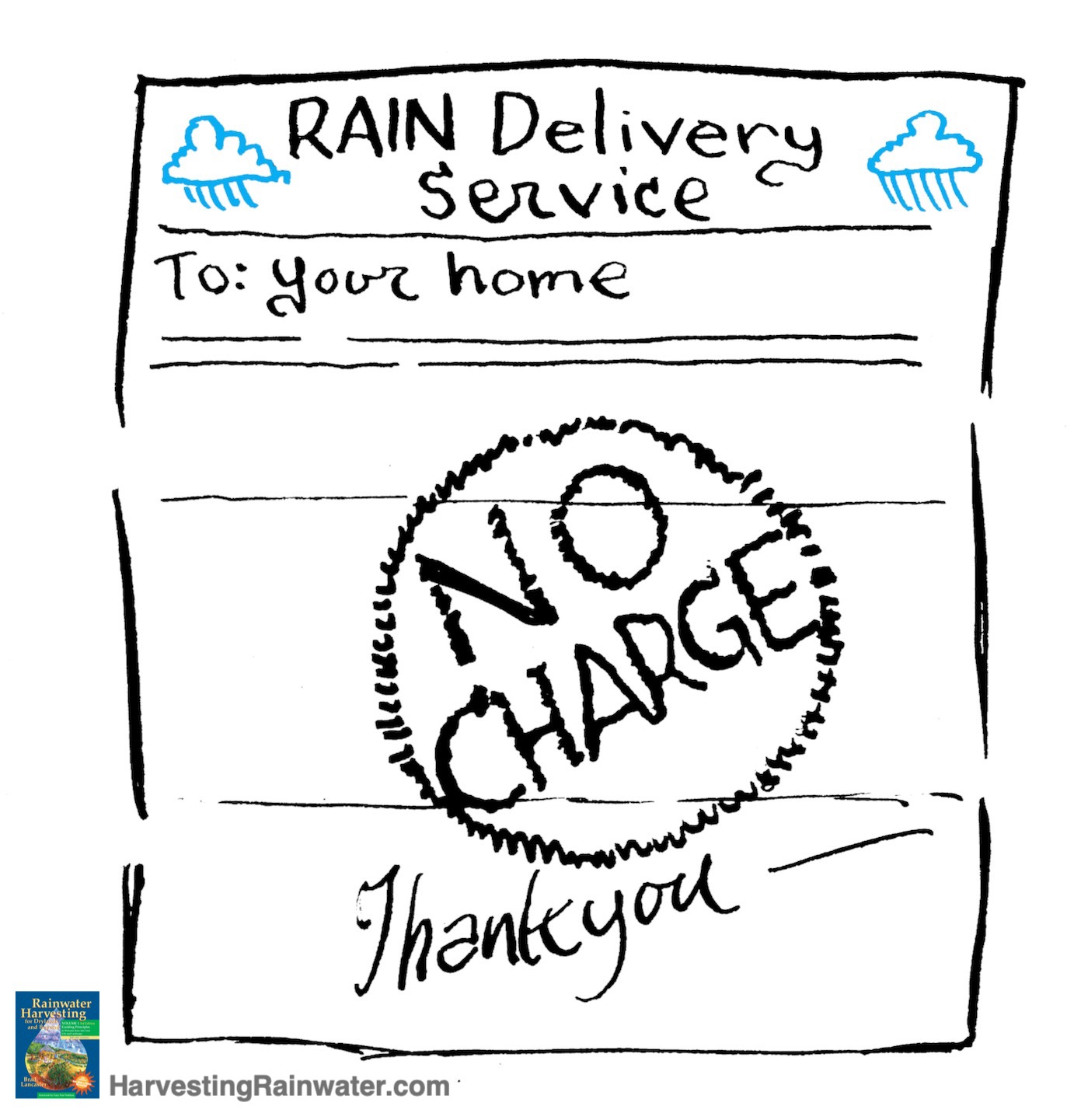

Blue arrows denote runoff flow (dots within dirty blue arrows denote sediment). Black arrow denotes electricity flow.
Illustration: Joe Marshall

Blue arrows denote cleaner runoff flow. Dirty blue arrows denote dirtier runoff flow. Black arrow denotes electricity flow.
Dashed lines denote greywater pipe. Solar panels and solar hot water heater added to roof.
Illustration: Joe Marshall

Rain, runoff, and topsoil are quickly drained off the landscape to the street where the sediment-laden water contributes to downstream flooding and contamination.
The landscape is dependent upon municipal/well water irrigation and imported fertilizer.
Illustration: Joe Marshall

Rain, runoff, leaf drop, and topsoil are harvested and utilized within the landscape contributing to flood control and enhanced water quality.
The system is self-irrigating with rain and self-fertilizing with harvested organic matter.
Illustration: Joe Marshall

The basins have not yet been mulched or planted.
Milagro Co-housing, Tucson, Arizona.
Design by Brad Lancaster, David Confer, and Tomas Guido Jr..
Photo: Natalie Hill.

Basins are designed to infiltrate water quickly so there are no problems with mosquitoes or anaerobic soils. These basins, with their spongy mulch and soil-burrowing plant roots, infiltrate all water within 20 minutes.
Photo: Brad Lancaster

Photo: Brad Lancaster

Illustration: Joe Marshall
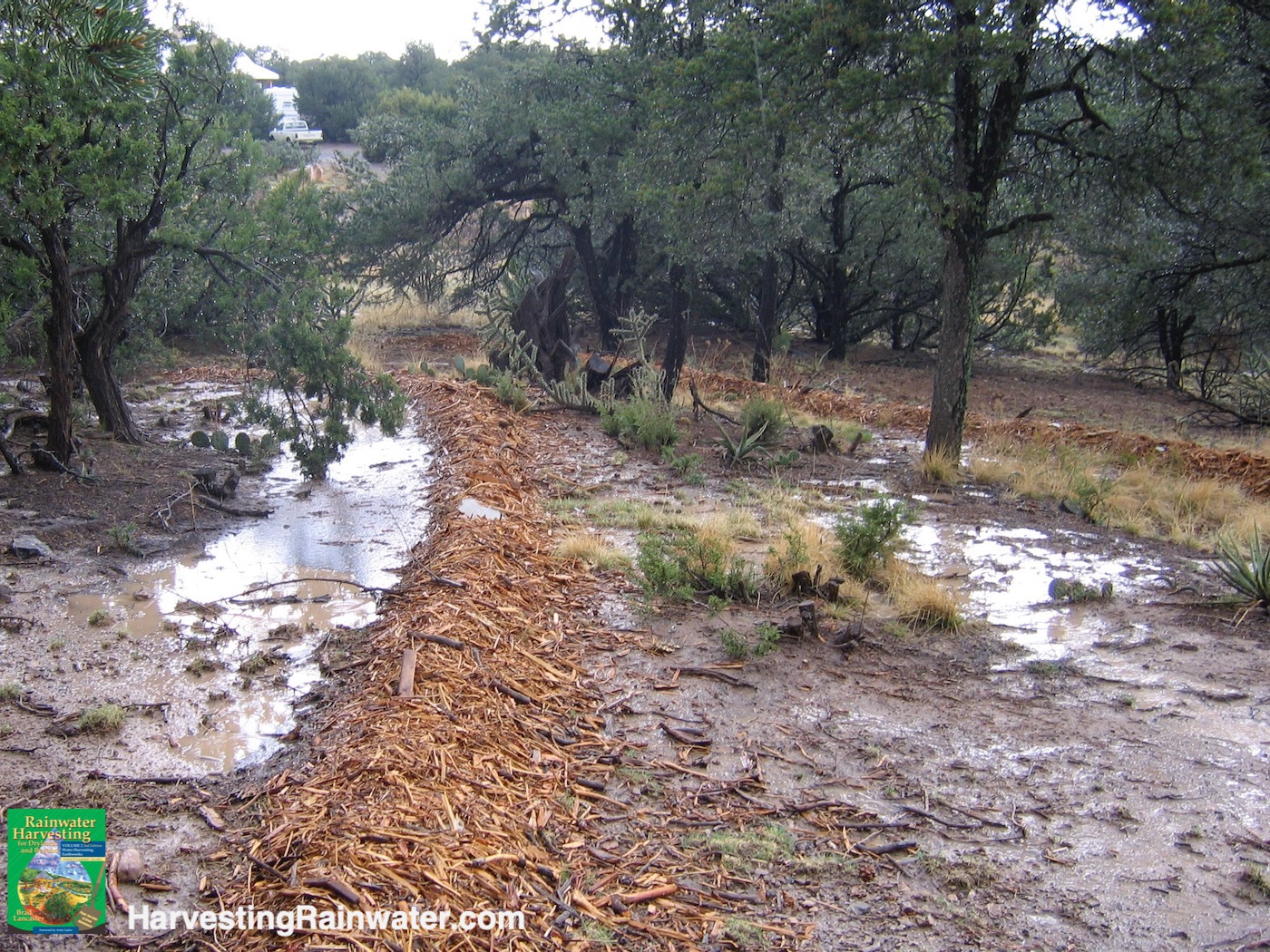
Chris Meuli’s land, Edgewood, New Mexico.
Photo: Chris Meuli
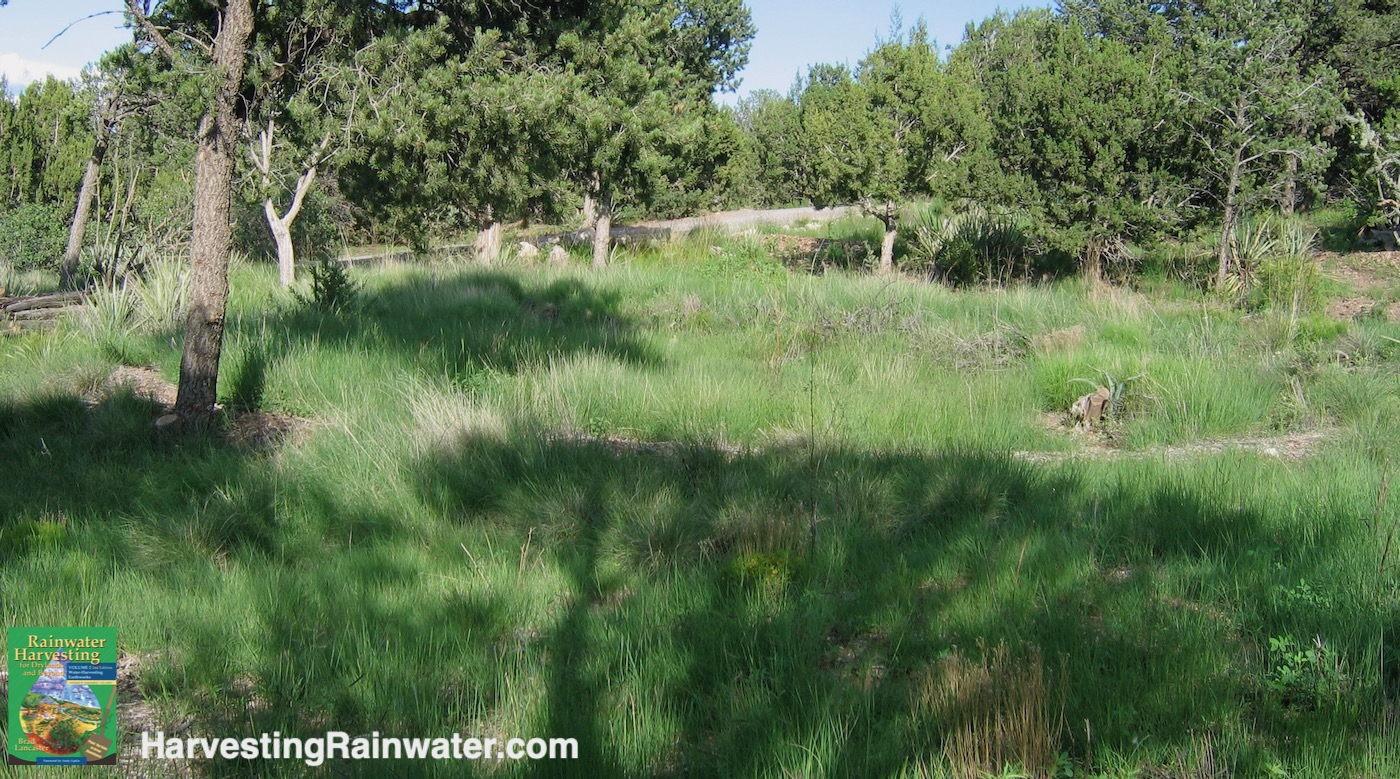
Chris Meuli’s land, 2006, post rains.
Photo: Chris Meuli
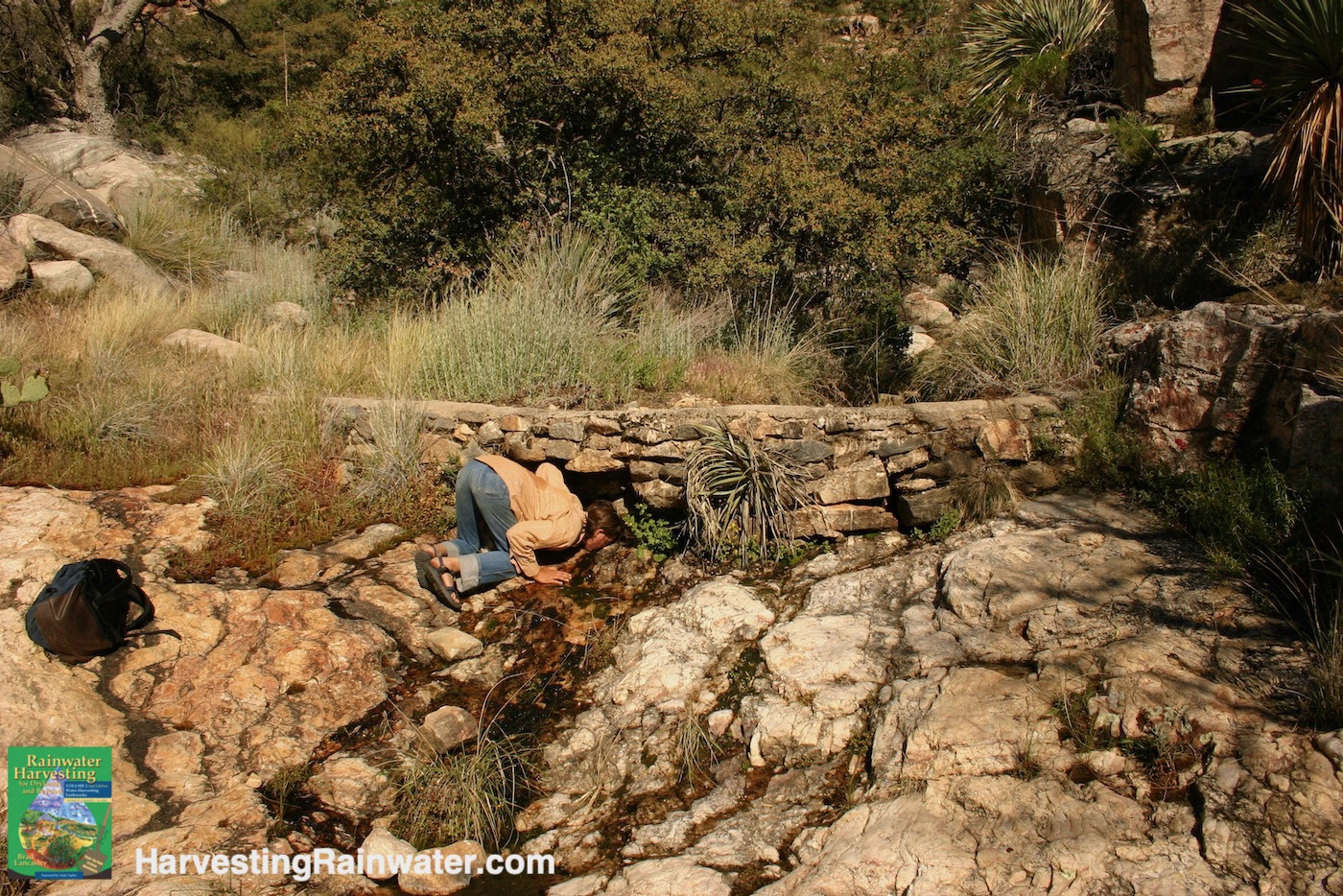
Check dam built long ago atop bare bedrock has accumulated a level terrace of soil and organic matter upslope of the dam in which vegetation now thrives. The harvested soil and organic matter acts as a sand tank that quickly infiltrates stormwater flow, then slowly releases it to the plants’ roots, and as a seeping flow over the bedrock that continues to run for weeks after the last rain. Anastasia Rabin enjoys a drink of this tasty water. Pima Canyon, Tucson, Arizona. See “Rainwater Harvesting for Drylands and Beyond, Volume 2, 2nd Edition” for more.
Photo: Brad Lancaster

Rain garden in Portland, Oregon.
Photo: Brad Lancaster
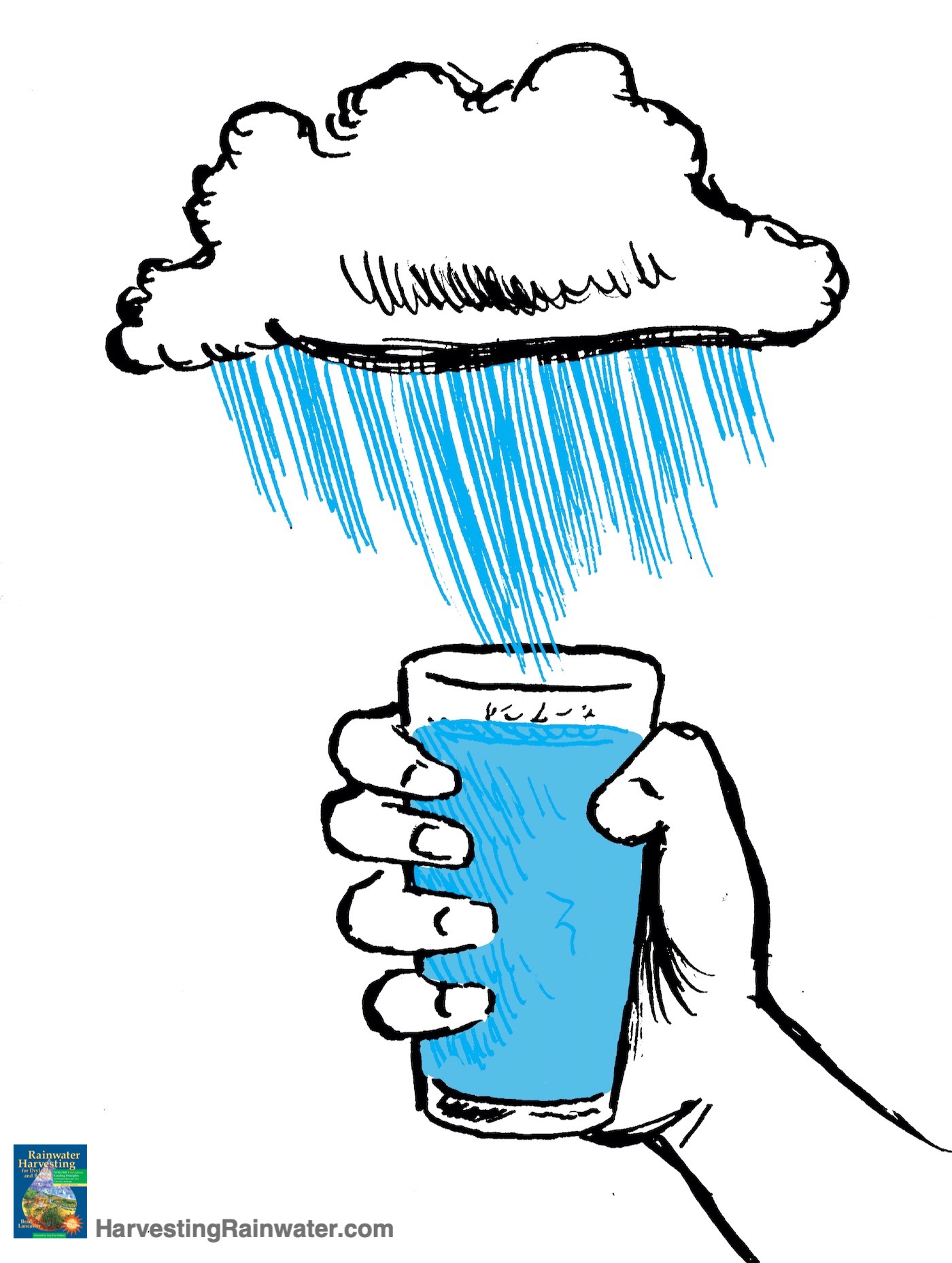
Illustration: Joe Marshall

I loved this place. You hike 10 miles to get there. You camp under a coconut palm on a beach of turquoise water. You defecate in a composting toilet with an incredible view of the ocean. And you get all your fresh water from this simple rainwater catchment system.
Photo: Brad Lancaster

The Natural Gardener in Austin, Texas only uses rainwater to make its compost teas because the beneficial life flourishes with rainwater, while the harder (higher mineral and salt content) municipal or ground water comparatively tends to inhibit some of the beneficial growth.
Photo: Brad Lancaster

The Natural Gardener in Austin, Texas only uses rainwater to make its compost teas because the beneficial life flourishes with rainwater, while the harder (higher mineral and salt content) municipal or ground water comparatively tends to inhibit some of the beneficial growth.
Photo: Brad Lancaster

This 10-foot (3-m) high, 6-foot (1.8-m) diameter metal culvert cistern reaches upward, capturing roof runoff through the hand’s index finger and sending overflow out its thumb. The overflow water is then caught by a series of terraced planters.
Terrace walls double as seating benches.
Photo: Brad Lancaster

Inflow via forefinger, overflow via the thumb to terraced gardens. Vine Street, Seattle, Washington
Photo: Brad Lancaster
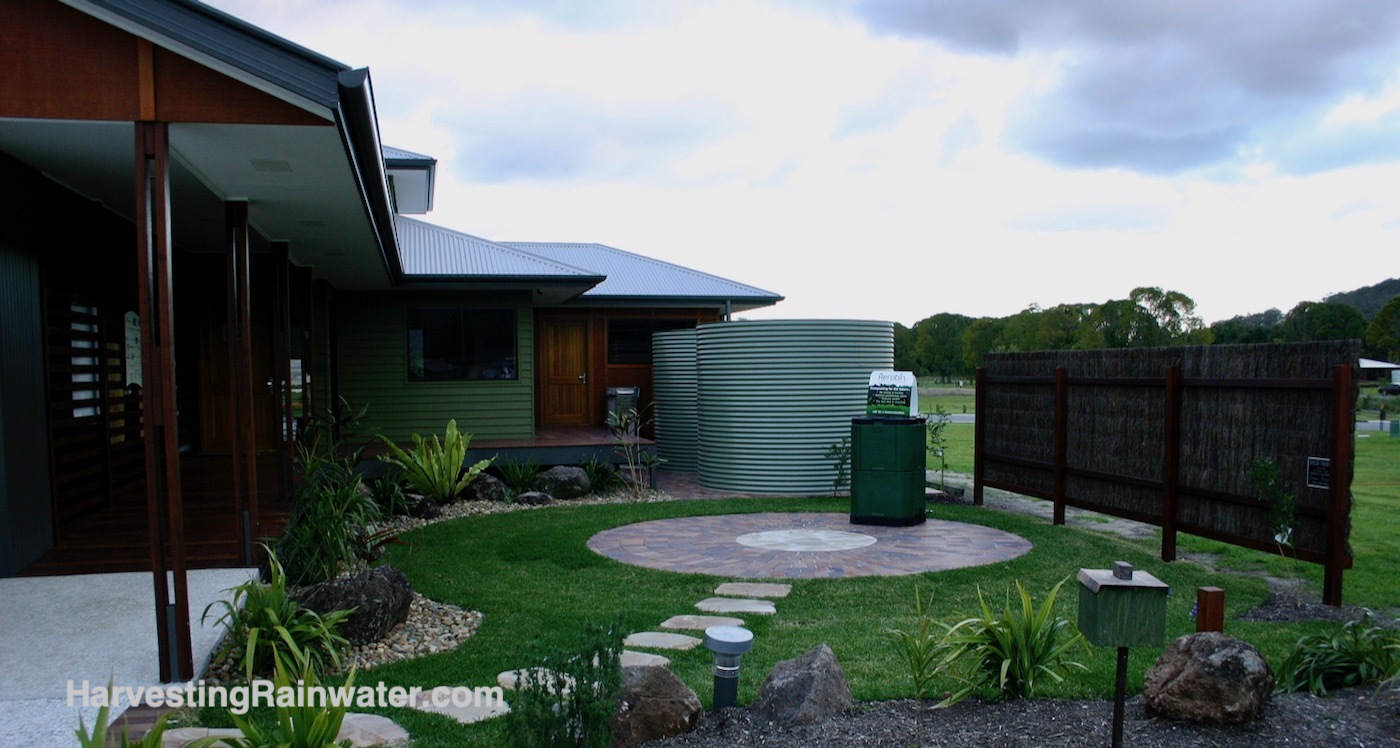
Photo: Brad Lancaster

Photo: Brad Lancaster

Photo: Brad Lancaster

An arched aquaduct covered in vines (to right of person walking) brings distant roof runoff to the cistern via gravity.
Photo: Brad Lancaster

Photo: Brad Lancaster
For more…
Rainwater harvesting resources
Rainwater harvesting case studies
See additional image galleries here and learn how to design and implement many of these systems and more in the books below...
See the new, full-color, revised editions of Brad’s award-winning books
– available a deep discount, direct from Brad:

Volume 1

